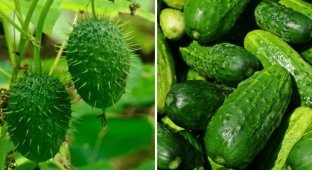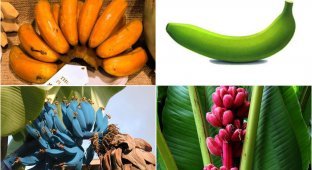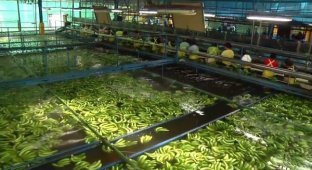What fruits and vegetables looked like before selection (14 photos)
We are accustomed to the appearance and taste of vegetables and fruits that we eat all our lives. But they are all the result of selection. After all, their wild relatives were very, very different. Let's see what they looked like at the time when people began to domesticate agricultural crops.
1. Banana 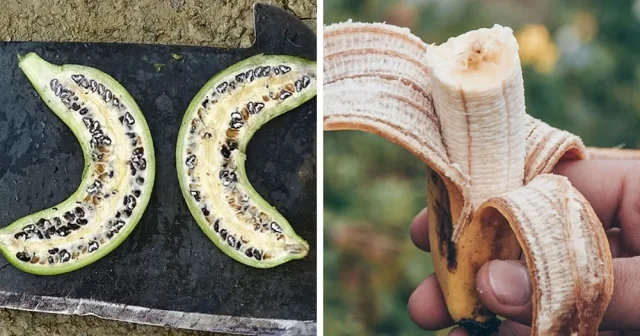
The first bananas appeared about 7,000 years ago in Southeast Asia. Before becoming a creamy, sweet fruit, it had large seeds that took up most of the space.
It took a lot of effort to save bananas from extinction. In the last century, a fungal infection could have destroyed the plantations, but thanks to breeders, the Giant Cavendish variety was developed.
Until the 1950s, people ate another variety of bananas called Gros Michel. It was a sweeter and more delicate variety.
2. Corn 
The corn we see today is very different from its ancestors. It was cultivated more than 8,700 years ago by the indigenous peoples of Mexico. The first varieties had hard grains, tasted like dry raw potatoes, and were very small.
Currently, corn is a thousand times larger, and there are almost 200 varieties of various colors.
3. Lemon 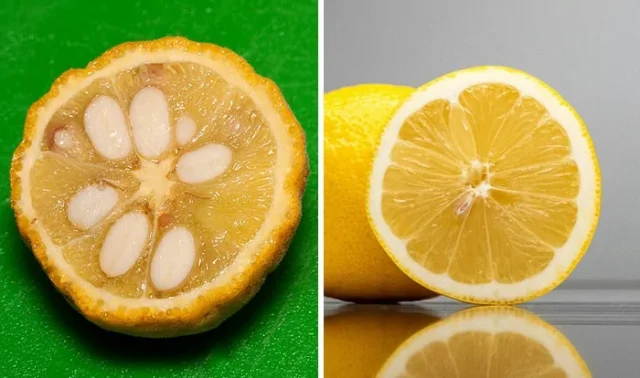
Lemons are not found in the wild. Scientists believe that these fruits are a hybrid of two citrus fruits - bitter orange and citron. They first appeared in Asia almost 3,300 years ago, but were so sour that they could not be eaten. It remains a mystery how sweet varieties appeared.
4. Apple 
The birthplace of the modern apple is in the Tien Shan Mountains in Kazakhstan. It is believed that man began to grow this fruit almost 10,000 years ago. Around 300 BC, the Romans began to breed apple varieties to get tastier fruits.
Travellers contributed to the expansion of the fruit's growing area by spreading its seeds and pollen.
5. Cabbage 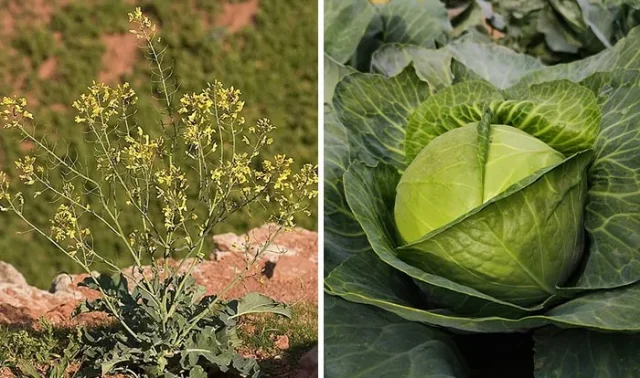
Cabbage domestication began more than 3,500 years ago, in the middle of the Bronze Age. The fleshy, plump heads we are accustomed to were seen in Europe in the 14th century, and in 1541 they were brought to America by a French explorer.
Broccoli, cauliflower, cabbage, kale, and other varieties all originate from the Brassica oleracea species. The wild variety grew primarily along limestone sea cliffs, as it was highly resistant to salt and lime.
6. Plum 
The tasty and sweet plum may have been one of the first domesticated fruits. Ancient records indicate that plums were originally grown in the Damascus area. Plum remains have been found in Neolithic archaeological sites along with olives, grapes, and figs.
7. Carrot 
In the East, early domesticated carrots were often unusually colored, purple or yellow. At the same time, orange carrots were prevalent in the West. The wild predecessor of the vegetable was ivory-colored and had a forked root. The modern orange carrot is the merit of Dutch farmers, who bred it at the turn of the 18th century.
It is believed that the orange color was chosen because such carrots did not spoil soups and stews, unlike their purple counterparts.
8. Watermelon 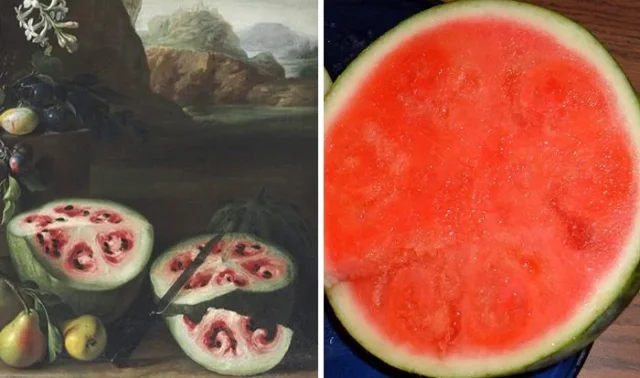
Watermelon was domesticated in Africa, and the inhabitants of Egypt cultivated it as early as 2000 BC. Wild varieties were not sweet and had a thicker rind. Around 1576, Spanish settlers began growing watermelons similar to those we see today.
9. Cucumber 
The cucumber was domesticated in Asia about 3,000 years ago. It was grown for food and medicine in the Roman Empire. And a 1772 engraving shows a wild plant with small bean-shaped fruits and beautiful yellow flowers.
Early cucumbers often had a bitter taste due to compounds they contained called cucurbitacins.
10. Avocado 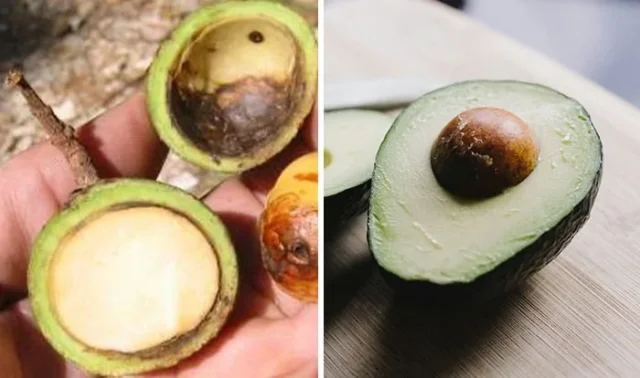
Evidence of avocado consumption dating back almost 10,000 years in central Mexico. The wild fruit originally had a large pit. It is believed to have been domesticated between 4000 and 2800 BCE.
In 1925, amateur gardener Rudolf Hass developed a new variety of avocado with dark green, bumpy skin. Now we have many unique varieties, such as the West Indian avocado, which is considered the largest. It is round, has smooth, light green skin, and a sweet taste.
11. Peach 
Unlike corn, peaches have not changed much since ancient times. Domestication likely occurred in Japan between 4700 and 4400 BCE, resulting in a more compressed pit. Otherwise, these varieties were similar to modern peaches.
12. Grapes 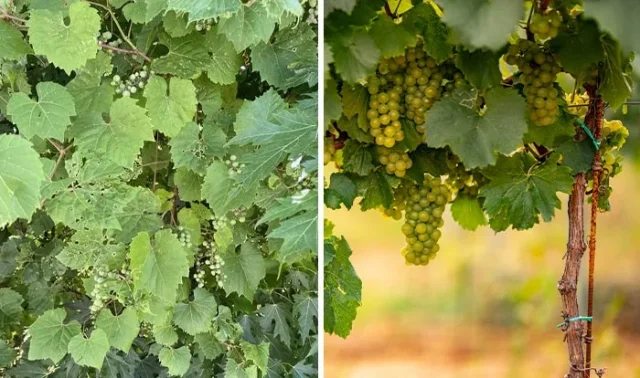
Both Western Asia and the Caucasus have been cultivating grapes for 11,000 years. The result was table and wine grape varieties. In the 19th century, Ephraim Bull began breeding grapes that could thrive in cold climates and developed the Concord variety.
Gradually, grape varieties spread throughout the world, and now they differ in size, taste, and skin color of the berries.
13. Eggplant 
The domestication of eggplant occurred around 59 BC, since written sources describing this crop have survived in ancient China. Only in the 7th-10th centuries did the cultivation of nightshades spread throughout the world. Over time, the size and shape of the eggplant have undergone significant changes.
14. Tomato 
Tomatoes were originally quite small and resembled berries. The fruits were domesticated in Mesoamerica about 7,000 years ago.
The modern red and juicy tomato is significantly different from its tiny ancestor, but it can still be found today. This species is called Solanum pimpinellifolium, or currant tomato, and grows in Ecuador and Peru.












